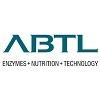A Dose Response of a Heat Stable Phytase on Broiler Performance and Nutrient Digestibility
A total of 2160 male broilers were distributed over 60 pens to host 5 treatments. A starter feed (day 1 to 21) and finisher feed (day 22-35) were used (both pelleted). A negative control (NC) feed was reformulated by reducing a positive control (PC) feed by 0.2 percentage point protein, 0.02 percentage point dig. Lys (and other essential amino acids keeping a constant ratio to Lys), 0.18 percentage point Ca and P, and 0.09 MJ/kg ME. The PC starter feed contained 202 g/kg crude protein (CP), 11.5 g/kg dig Lys, 12.04 MJ/kg ME broiler, 8.0 g/kg Ca, 6.8 g/kg P, and 4.0 g/kg available P (aP). The PC finisher feed contained 176 g/kg CP, 9.5 g/kg dig. Lys, 12.67 MJ/kg ME broiler, 7.0 g/kg Ca, 5.9 g/kg P and 3.4 g/kg aP. To the NC feeds 0, 250, 500 or 1000 FTU of phytase was added per kg of feed and performance was measured per feeding phase. At 21 days, bone ash was determined on 3 birds per pen. At the end of the trial, 10 birds per pen were killed and ileal samples was collected to determine P, Ca and CP in order to calculate their digestibility.
Results indicated that the phytase at 250 FTU/kg could compensate for the performance loss due to the feeding the NC, bringing body weight back to the PC level (2445 g/b vs 2428 g/b and 2396 g/b for 250 FTU/kg for the PC and the NC, respectively). The final body weight reached 2447 g/b and 2518 g/b for the 500 FTU and 1000 FTU/kg treatments. Feed conversion (FCR) was significantly increased in the NC (1.600 vs 1.572 for the PC; P < 0.05) while the FCR was 1.575 and 1.580 for the 250 FTU/kg and 500 FTU/kg treatment (not significant versus the PC nor NC). The FCR at a dose of 1000 FTU/kg (1.572) was significantly different from the NC (P< 0.05). Bone ash increased in a dose responsive way whereby the 1000 FTU/kg treatment reached nearly the value of the bone ash of the PC (39.2 % vs 39.7 % respectively).
The digestibility of P increased linearly with increasing levels of phytase addition (71.3, 76.9 and 78.4 % for 250, 500 and 1000 FTU/kg versus 46.3 and 48.7 % for the PC and the NC respectively). This effect was significant for all phytase vs PC and NC while the 1000 FTU/kg treatment was also significantly different from the 250 FTU/kg treatment (P < 0.05). Crude protein digestibility increased with phytase addition, however no significant differences between treatments could be detected (73.3, 73.4, 75.5, 76.4 and 76.3 % for PC, NC, 250 FTU/kg, 500 FTU/kg and 1000 FTU/kg, respectively). Ca digestibility was significantly higher for the NC and the phytase supplemented feeds (30.6, 48.2, 49.8, 50.5 and 54.3 %, respectively). Based on the digestibility values and the P, Ca and CP levels in the feed, it was calculated that the phytase at 250, 500 and 1000 FTU/kg resulted in improvements of 1.11, 1.38 and 1.45 g/kg dig P, of 3.95, 5.67 and 5.49 g/kg digestible protein and of 0.11, 0.15 and 0.40 % dig. Ca per kg feed respectively.




Beeson LA, Walk CL, Bedford MR & Olukosi O (2017) Poultry Science 96: 2243-2253.
CVB (2018) http://www.cvbdiervoeding.nl/bestand/10501/cvb-feed-table-2018-edition2.pdf.ashx
ISO 30024 https://www.iso.org/standard/45787.html.
Shastak Y, Witzig M, Hartung K & Rodehutscord M (2012) Poultry Science 91: 2201–2209.


Mechanisms of Action for Phytase Enzymes in Poultry Diets for enhanced Phosphorus availability to Birds.?
1. Since first commercial utilisation, phytase has mainly been considered to be a tool to increase phosphourus (P) availability/digestibility from vegetable sources and so to reduce the inclusion of higher cost P sources. ??
2. Here, phytase releases the P bound in the phytate molecule, increasing the availability/digestibility of this mineral to the animal. ?
a) Thus, increasing the inclusion rate of phytase would be expected to release additional P from the indigestible feed phytate and consequently allow an even greater substitution of higher cost P sources.??
3. Phytate as an anti-nutrient:
a) As more phosphorus is removed from phytate, leading to more breakdown of intact IP-6, the less able it is to bind or chelate minerals, starch or proteins either directly or via ionic bridges (Selle & Ravindran, 2007). ??
b) Decreasing the binding of these compounds through the use of phytase may directly improve the digestibility not only of phosphorus and divalent cations such as Ca, Zn and Mg, but also indirectly increase energy and nitrogen utilization. ??
c) It is interesting that the effect of phytase on amino acid digestibility tends to be greatest on those amino acids that are prevalent in intestinal maintenance and turnover, namely cystine, threonine, proline and glycine when measured (Selle et. al., 2006).??
4. Several trials with higher doses of phytase using diets with normal levels of P have already shown better poultry performance, but this increase of performance was always correlated to an increase in P digestibility even if the diet did not have lower levels of P.
a) Phytases are digestive enzymes which release plant phosphorus from phytic acid.
b) Monogastric animals lack sufficient phytases to release the phosphorus.
c) Adding extra phytases to the diet increases phytate breakdown and consequent utilization of plant phosphorus.
d) If more phosphorus is available naturally, then less of this substance has to be added to the diet. This greatly reduces feed costs.??
5. Research findings on Phytase.
a) It has been clearly shown that phytate solubilises in the acidic region of the chicken gut, thus this is the critical area of digestion where one needs a highly efficacious phytase to work (Tamim, et al., 2004).
b) The response can vary depending if the product is thermo-tolerant and able to survive the normal pelleting process (Parr and Wyatt, 2006).
c) The intrinsically thermo-tolerant enzymes are clearly the best solution,


E.S.E. & INTEC











